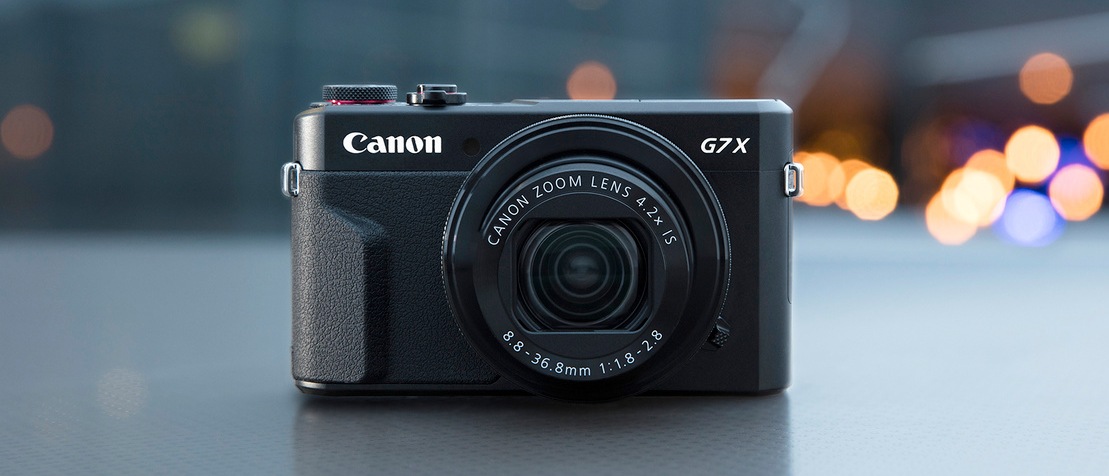TechRadar Verdict
Canon didn't need to deliver a major overhaul of its excellent G7 X, and the upgrades in the G7 X II build on the original camera's reputation, particularly the performance-boosting DIGIC 7 processor. The only disappointment is the continued absence of a viewfinder.
Pros
- +
Great low-light performance
- +
Tilting touchscreen
- +
Plenty of manual control options
- +
Raw format shooting
- +
Optical image stabilization
Cons
- -
No viewfinder
- -
Screen not fully articulating
- -
Limited zoom range
- -
1080p video capture
Why you can trust TechRadar
Cameras with a one-inch type sensor are a popular choice right now thanks to their superior image quality over most other compact cameras.
Sony and Panasonic have included them in their premium compact cameras, while the PowerShot G7 X Mark II from Canon is its latest camera to feature one of these chips. A 1.0-inch sensor is typically about 4x larger than the sensor in a typical compact camera, which sees much better detail produced, while low-light shooting is also improved.
Features
- 1.0-inch CMOS sensor, 20.1MP
- 24-100mm f/1.8-2.8 zoom lens
- 1080p video capture
The G7 X Mark II succeeds the G7 X in the middle of Canon's high-end G series range of compact cameras. Not a huge amount has changed from the previous version, but there are some significant, if incremental, updates.
There's still the same 20.1 million-pixel CMOS sensor, and a 4x optical zoom lens that offers an equivalent focal length of 24-100mm and covers an aperture range of f/1.8-f/2.8.
Sensor: 20.1MP 1-inch CMOS sensor
Lens: 24-100mm f/1.8-2.8
Screen: 3.0-inch tilting touchscreen, 1,040,000 dots
Viewfinder: N/A
Burst shooting: 8fps
Autofocus: 31-point AF
Video: 1080p
Connectivity: Wi-Fi and NFC
Battery life: up to 265 shots
Weight: 319g
A couple of minor changes have been made to the exterior of the camera, but perhaps the biggest upgrade of note is the addition of a DIGIC 7 processor, the newest available in any Canon camera. This brings with it upgrades to shooting performance, including a faster burst shooting rate.
Full HD video recording is available, although there's sadly no sign of 4K yet for Canon's compact cameras. Wi-Fi and NFC connectivity is present, while the touch-sensitive screen tilts to enable shooting at awkward angles; however there's no built-in viewfinder, and, with no hotshoe or accessory port, no option to add one either.



As with all of the other current Canon G-series compacts you can record images in raw format, and manual exposure control is available, along with semi-automatic exposure modes (aperture priority and shutter priority) and a collection of automatic settings.
Sign up for breaking news, reviews, opinion, top tech deals, and more.
The G7 X II's main competitor is probably the Sony Cyber-shot RX100 V and Panasonic Lumix LX10 (known as the LX15 outside the US). Both have a one-inch sensor and a relatively restricted focal length range, but for now at least, the PowerShot G7X Mark II has the cheaper retail price.

Amy has been writing about cameras, photography and associated tech since 2009. Amy was once part of the photography testing team for Future Publishing working across TechRadar, Digital Camera, PhotoPlus, N Photo and Photography Week. For her photography, she has won awards and has been exhibited. She often partakes in unusual projects - including one intense year where she used a different camera every single day. Amy is currently the Features Editor at Amateur Photographer magazine, and in her increasingly little spare time works across a number of high-profile publications including Wired, Stuff, Digital Camera World, Expert Reviews, and just a little off-tangent, PetsRadar.
